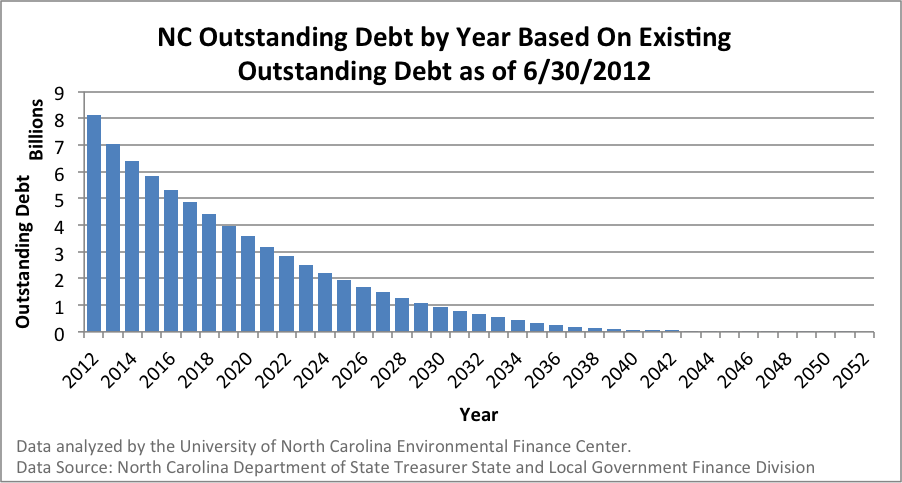Sarah Royster is a graduate student with the UNC School of Public Health pursuing a Master’s Degree in Environmental Engineering. She works as a Research Assistant with the Environmental Finance Center.
Debt and debt management for water and sewer utilities are becoming increasingly important as our country’s infrastructure needs continue to grow. The U.S. Environmental Protection Agency’s recently released 2011 Drinking Water Infrastructure Needs Survey and Assessment indicates that $384.2 billion in water infrastructure investments is needed over the next 20 years. Ten billion dollars of this need comes from North Carolina and much (if not most) of the infrastructure will be funded through debt. This makes North Carolina one of only ten states in the country with an infrastructure need above ten billion dollars. Many are concerned that financing such a large amount of debt will be challenging. Add to this concern, that North Carolina utilities already have $8 billion in outstanding debt – a value that has been consistently rising each year. In 2008, for example, North Carolina utilities had $6.7 billion in outstanding debt. This has risen to $8.1 billion in the span of four years. Paying off this outstanding debt, however, may not take as significant a toll on utility financial health as some fear. The graph below shows the outstanding water and wastewater debt for North Carolina as of June 30, 2012 and how this debt would be paid off based on linear payments to maturity date. If no more debt were issued, the current outstanding debt would be paid off by 2052. Most of this debt, however, would be paid off much sooner with a 50% reduction in outstanding debt by 2019.



